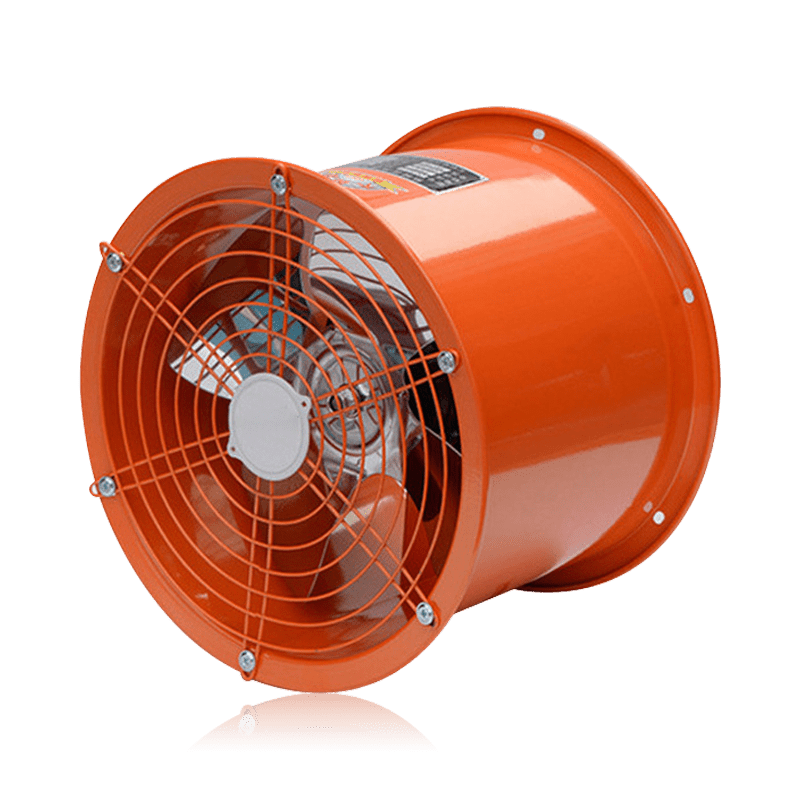
Key Highlights
- Explore the versatility of tube axial fans, essential for general ventilation across diverse commercial applications.
- Learn about different types of fans, including blower and propeller designs, with their unique capabilities.
- Discover key benefits like low noise operation, heat dissipation, and meeting a wide range of air movement requirements.
- Understand essential pre-installation tools, materials, and safety standards needed for successful setup.
- Follow a step-by-step installation guide, including site preparation and mounting to achieve optimal performance.
- Ensure the fan’s blade outflow supports effective ventilation after completing the installation process.
Introduction
Tube axial fans are important for many general ventilation and commercial applications. These fans are built to move large volumes of air in spaces like factories, warehouses, and workshops. The tubular design and high speed help take out heat and fumes. Tube axial fans can also help meet process air supply needs or fit into minimal space. The way these ventilation fans work keeps air moving well, which helps improve productivity and safety for people in both industrial and commercial places. Tube axial fans really are an ideal choice when you want good heat dissipation, clean air, and a better workplace.
Understanding Tube Axial Fans
Tube axial fans are known for their tubular design. They are made to move air well in places that need general ventilation or heat dissipation. These fans come with airfoil blades. You can also adjust the blade pitch to fit different needs. They give a mix of good engineering and dependable work.
People use tube axial fans in many indoor and outdoor places. You can see them in spray booths, kitchens, and on construction sites. These fans can make a lot of pressure while keeping low noise, so they help keep things safe. They also make working better in spots where there are fumes or tight spaces.
Definition and Types of Tube Axial Fans
Tube axial fans are used in many industrial spaces for ventilation. These fans help move air well in long, tube-shaped areas. The main shapes are propeller and blower. Tube axial fans fit places where you need a high level of air movement. People use them for both general ventilation and special cooling jobs.
Propeller types have blades set around the middle. These blades move large volumes of air easily because there is little to get in the way. They are good for simple ventilation jobs like moving air in warehouses or in a workshop. But, blower types are different. They raise air pressure and speed. This makes them the best choice when you need to send air to certain spots or when the area uses ducting to guide air.
Some tube axial fans are made to be explosion-proof. These types are great for places where there might be dangerous fumes. Tube axial fans can change the way the blades are set. This helps give mounting flexibility, so they work in many spots. They have become popular in commercial applications that need a strong but efficient way to handle ventilation needs.
Benefits of Using Tube Axial Fans in Various Settings
Tube axial fans have many benefits, so they are used in a lot of different places. They handle a wide range of requirements very well. You can use these fans in big factories or in smaller rooms that need better air flow and simple ventilation.
- Heat dissipation: These fans help control the temperature. This lets machines run without getting too hot.
- Low noise operation: The way these fans are made keeps the noise down. People can keep working without a lot of loud sounds around them.
- High efficiency: Their adjustable blade pitch and tubular design give strong airflow, and they do it without using a lot of power.
- Safety features: Some models have explosion-proof motor parts and a mesh cover. This helps them work safely even in tough settings.
People use tube axial fans to help with air in spray booths, or when spaces are small and clean air is important. With their adaptability, the tube axial fan is known as an ideal choice for keeping air moving in commercial and industrial places.
Pre-Installation Requirements
Before you put in tube axial fans, you need to get the site ready and make sure it will work for your setup. Look at the space and the area around it. The site has to meet all the needed rules, like limits for heat and how wet it gets. This is needed to help the fan work the right way, just like it should.
You should also check the ways air can move for ventilation. Make sure there is enough room around the spot for mounting flexibility, so you are not forced to only use one way to put in the tube axial fans. If you plan all of this before you start, it helps stop problems such as wrong fan placement or blocked airways. Your tube axial fans will then do their job and give you optimal air circulation. This also makes sure you stick to safety rules and meet compliance requirements.
Tools and Materials Needed for Installation
A good tube axial fan setup needs the right tools and materials. You will need measuring devices, screwdrivers, fasteners, and brackets for mounting flexibility. Using high-quality parts helps keep the fan steady and gives it a long life.
If you are working in a dangerous place, you must use safety-rated materials like explosion-proof housings. Mesh protective nets and strong screws help stop harm to the fan blades or outside surfaces while the fan is on. Also, you may need duct adapters if you want to add more to your ventilation system.
Remember to check that your tools work well with your fan’s model. For larger fans, you may need special screw anchors. Smaller fans can work with just simple mounting supplies. Doing things right the first time helps make the job smoother and gives you maximum performance.
Safety Measures and Compliance Standards
Safety should always be the top focus when you start working with a tube axial fan. To keep people safe and the system running well, it helps to follow the right rules and standards. Most fans will have safety markings and labels on them. These show if the fan is made to be explosion-proof, which will guide you when you install it at your site.
It is also important to think about the environment where you put the tube axial fan. Make sure too much water or humidity can not get to the fan. You also want to be sure that no liquids get inside it. For a steady setup, set the fan up straight either up and down or side by side. This stops tilting or damage from a shaky place. Mesh nets around the fan blades help keep out things like trash. Doing this can keep important areas inside the fan safe from outside stuff.
Take some time to read and understand the product information that comes from the maker of the tube axial fan. This step is good for making sure your setup matches what the maker wants. By working this way, you keep the fan working well. You also keep workers safe and make sure air moves fast enough for good heat dissipation, even when things get busy.
Step-by-Step Installation Process
Putting in tube axial fans means you need to get the site ready and use the right tools. This way, you be sure about the setup, and the tube axial fan sits strong and safe. If you follow all the step-by-step directions, it can help you meet any space needs and still keep the airflow moving well without adding big blocks in the way.
Each part matters. You need to take the right measurements and put up the tube axial fan in the right way so it stays safe. Doing this helps you reach the best maximum performance. That means the fan will work at its best, so you get the proper airflow and good ventilation for what you want. The fan will also match up well with its specs and what it should do.
Step 1: Site Preparation and Measurements
Site preparation starts when you pick the spot where you need the most airflow. It is good to choose a place that has minimal space problems so the fan can run without anything blocking it. At this point, look at things in the space, like how hot or damp it can get, and make sure these match with the fan’s needs.
You should use tools to measure things to get the correct size. You have to write down where you have to put the fan and how far it is from the walls or vents so there are no mistakes. For this, you can use a tape measure or something like a laser to find the space between things in the area the fan will be.
It is also a good step to see if there is equipment or things already in place where you want to set up the fan. These items could get in the way of airflow. Make sure all wires or vents go where they need to go to help the ventilation work right. If you make a good plan now, you will stop problems when you put the fan in and help it work well in the end.
Step 2: Mounting and Securing the Fan
Mounting the fan needs you to be careful and to use the right parts. Take a look at this table to help you:
| Step | Description |
|---|---|
| 1 | Put the fan on a flat place or a strong bracket. |
| 2 | Line up the screws and make the fan stay steady so it does not lean. |
| 3 | Add the ducts and make sure they fit tight, so air does not leak out. |
| 4 | Check for shaking, as it can happen if parts are loose. |
Be sure to use good screws and brackets to make the setup strong. When you want maximum performance, it is best to use explosion-proof pieces for mounting.
Check again to see if the fan sits straight and holds in place well. A tilted fan could cause problems with how safe it is and may also mean not as much air gets moved. Making the fan secure helps it give better output and lets the blades turn well without bumping into anything.
Conclusion
To sum up, putting in a tube axial fan needs good planning and careful work. This makes sure the fan works well and stays safe to use. If you follow the steps in this blog, you can get your place ready, collect all the needed tools, and keep to the right safety rules. Knowing about the benefits and the different types of tube axial fans will help you choose what is best for you. Good installation will make the axial fan run better and last longer. If you still have questions or want help, feel free to ask for expert advice.
Frequently Asked Questions
What is the average lifespan of a tube axial fan?
The average lifespan of a tube axial fan is about 10 to 15 years. This time can change based on how well you take care of it. If you service the bearings often, make sure to clean out ducting, and keep the right CFM, your fan will work better. Good routine care will help the tube axial fan last longer. It will also help it work well during that time.



